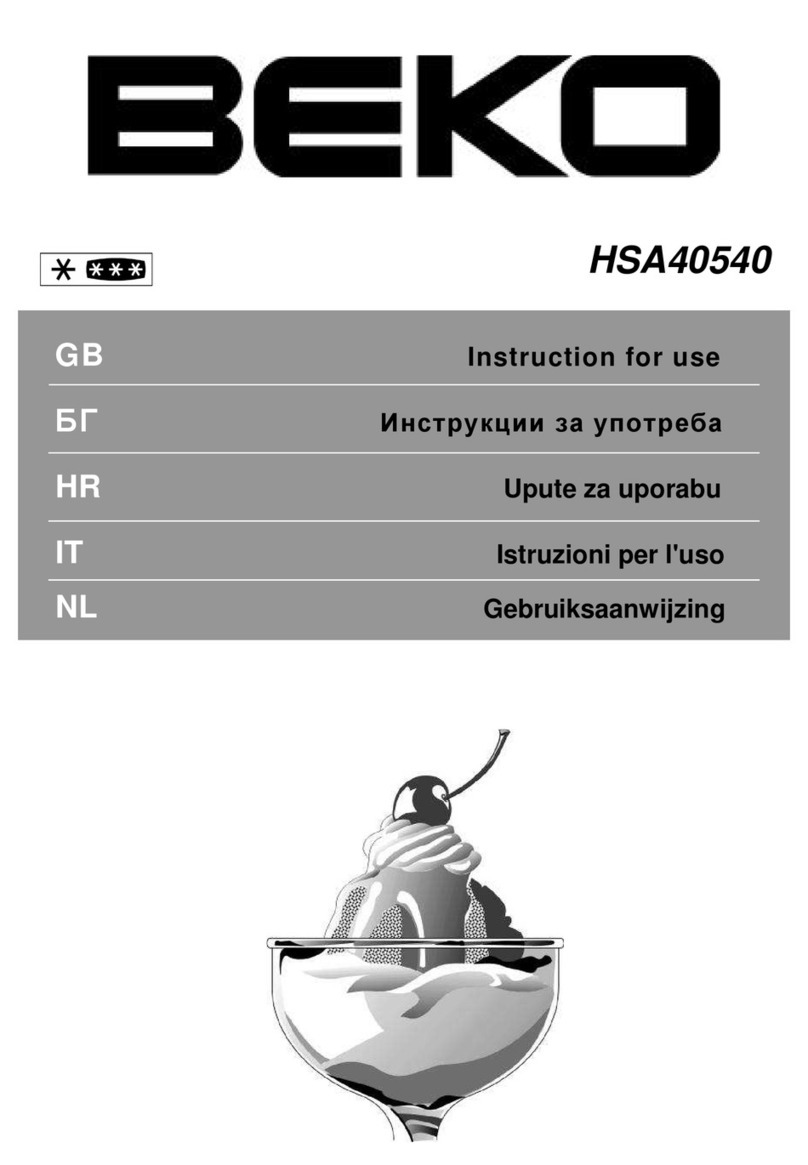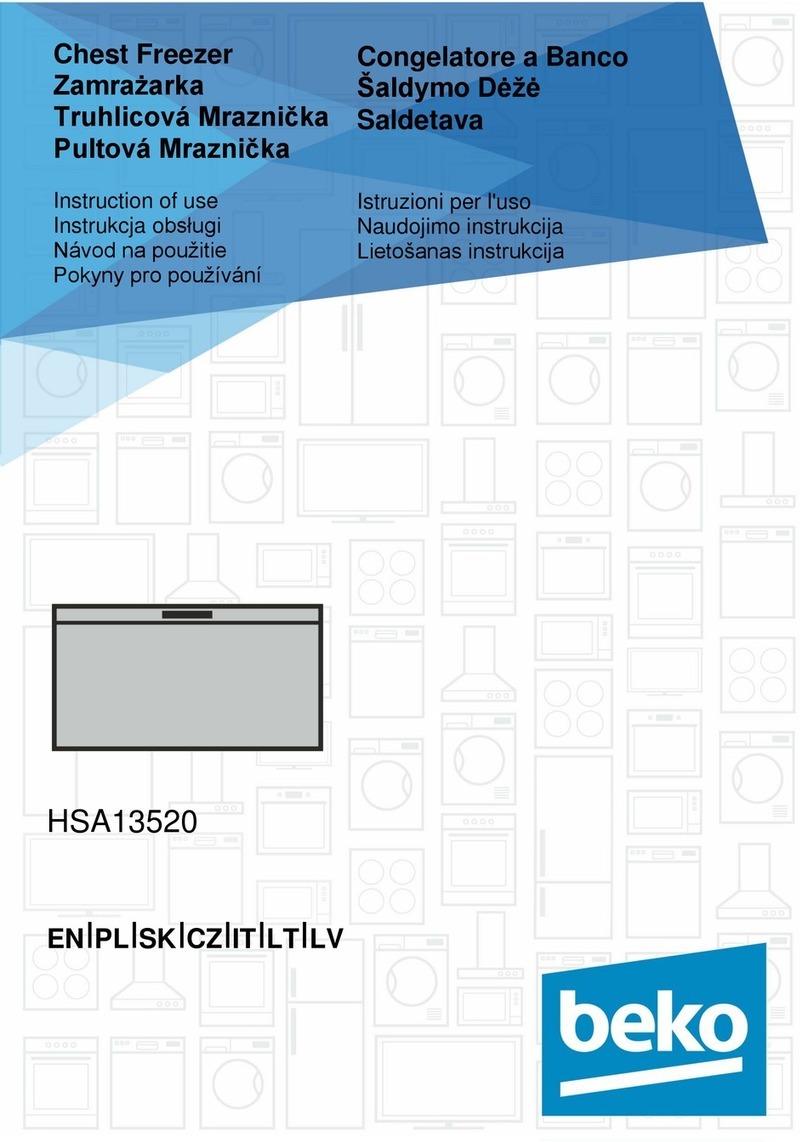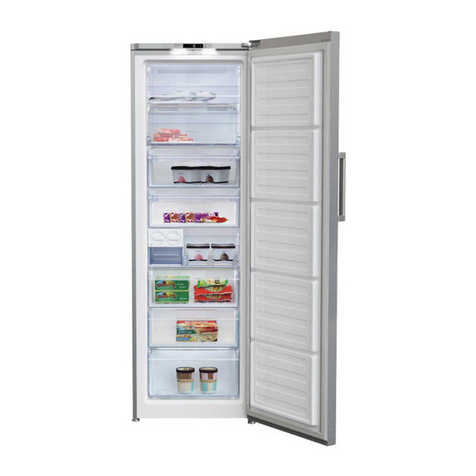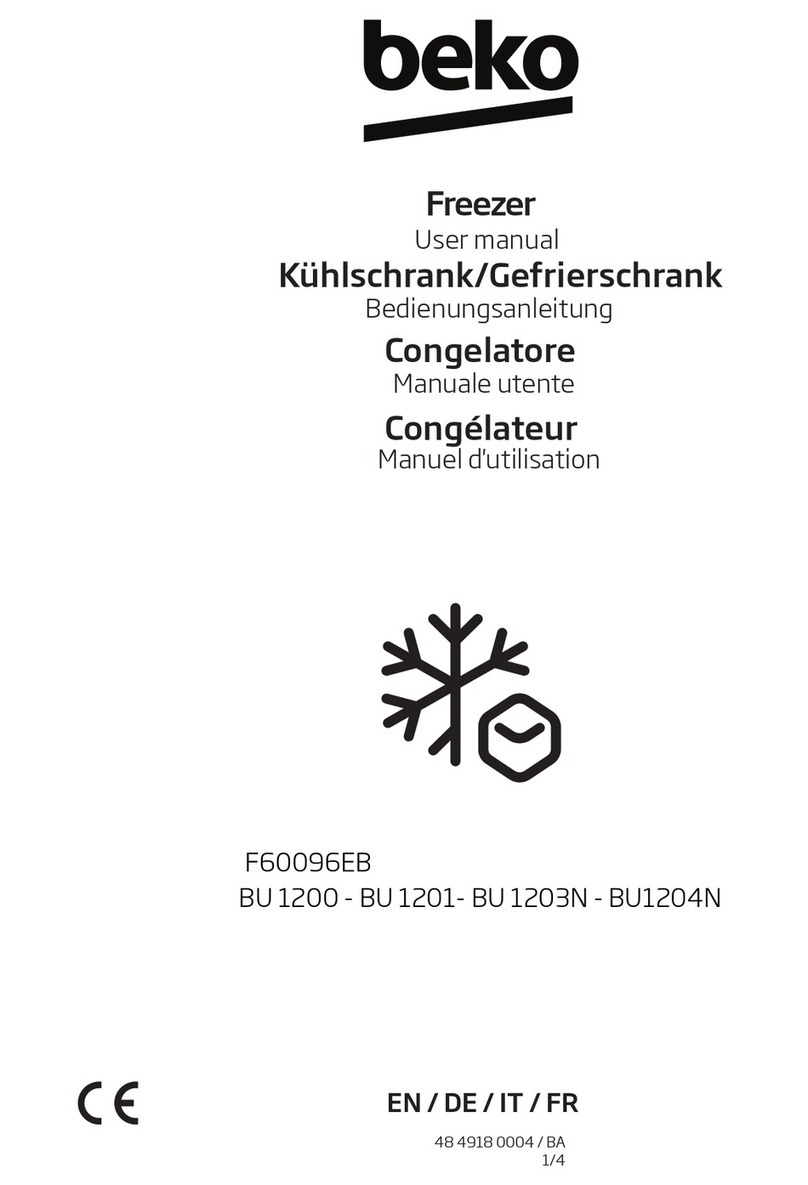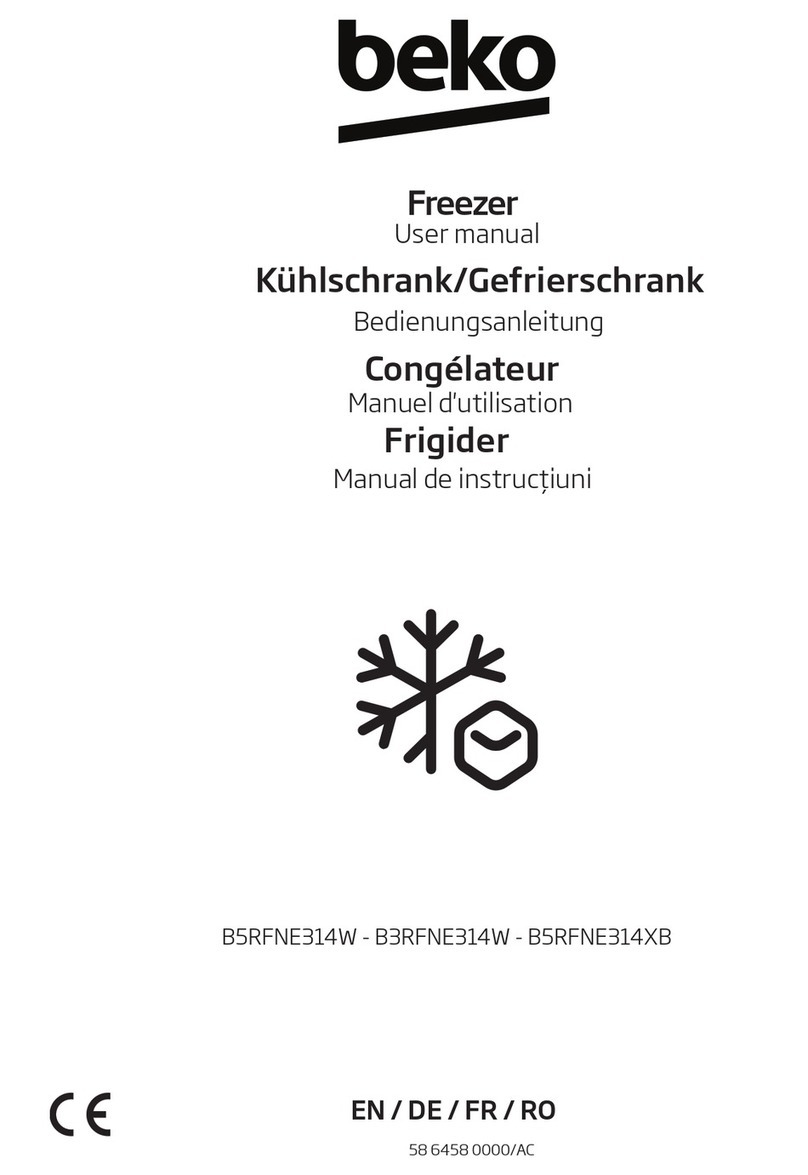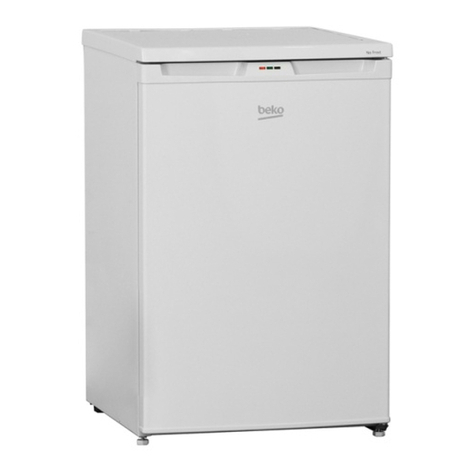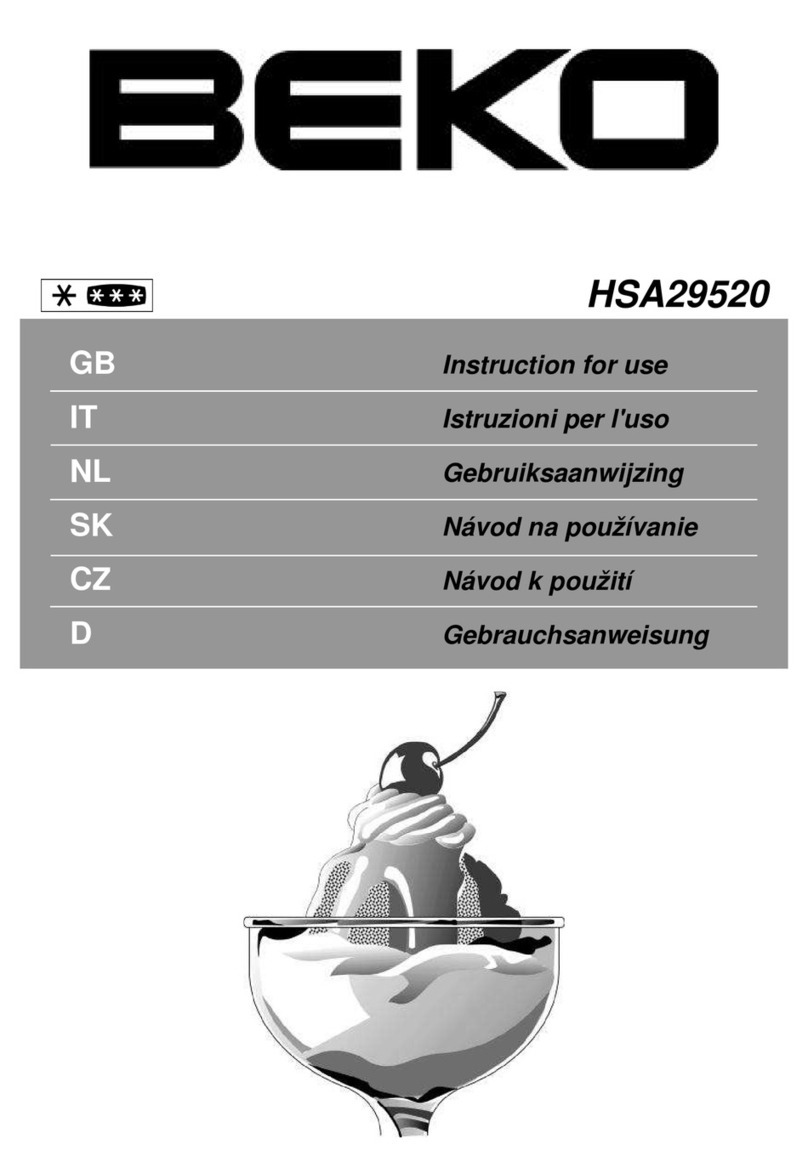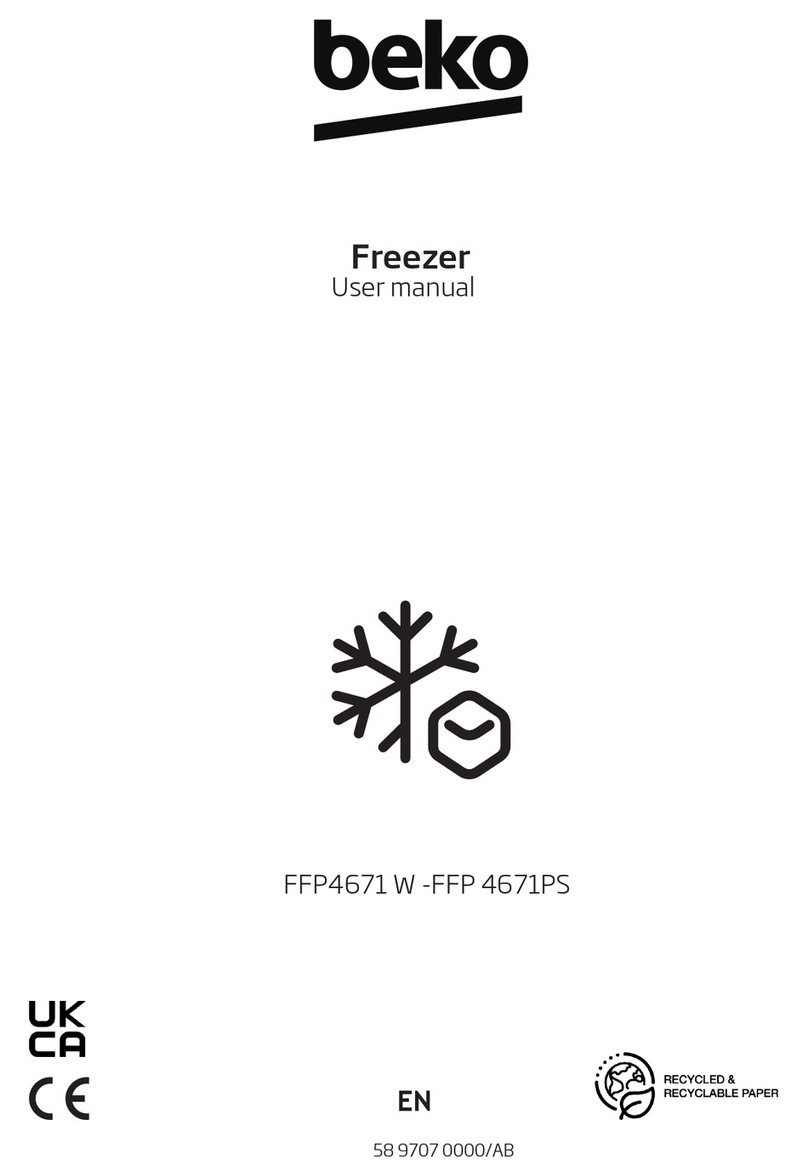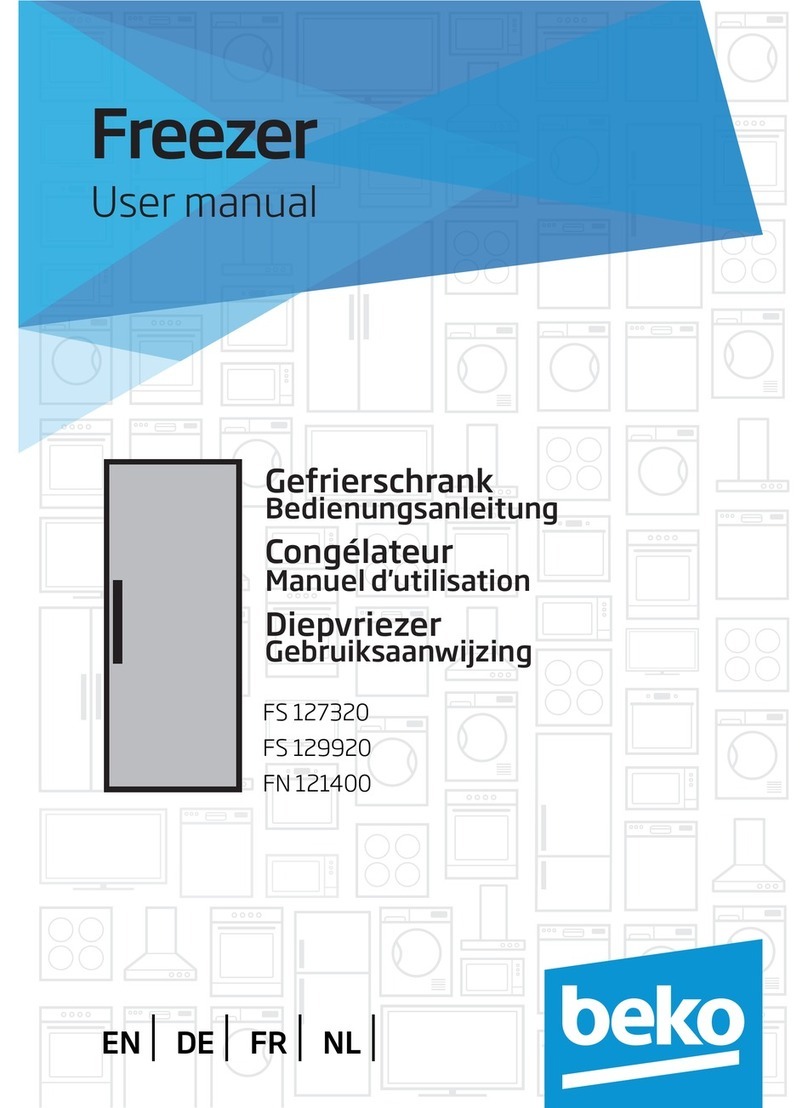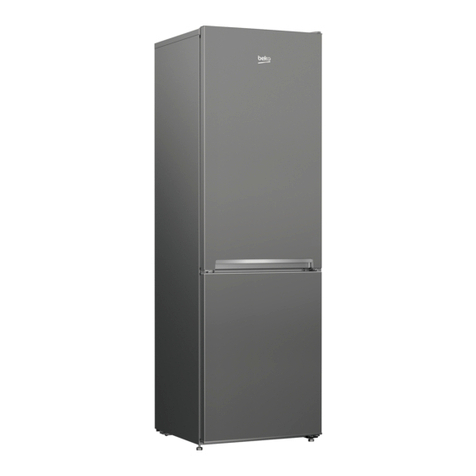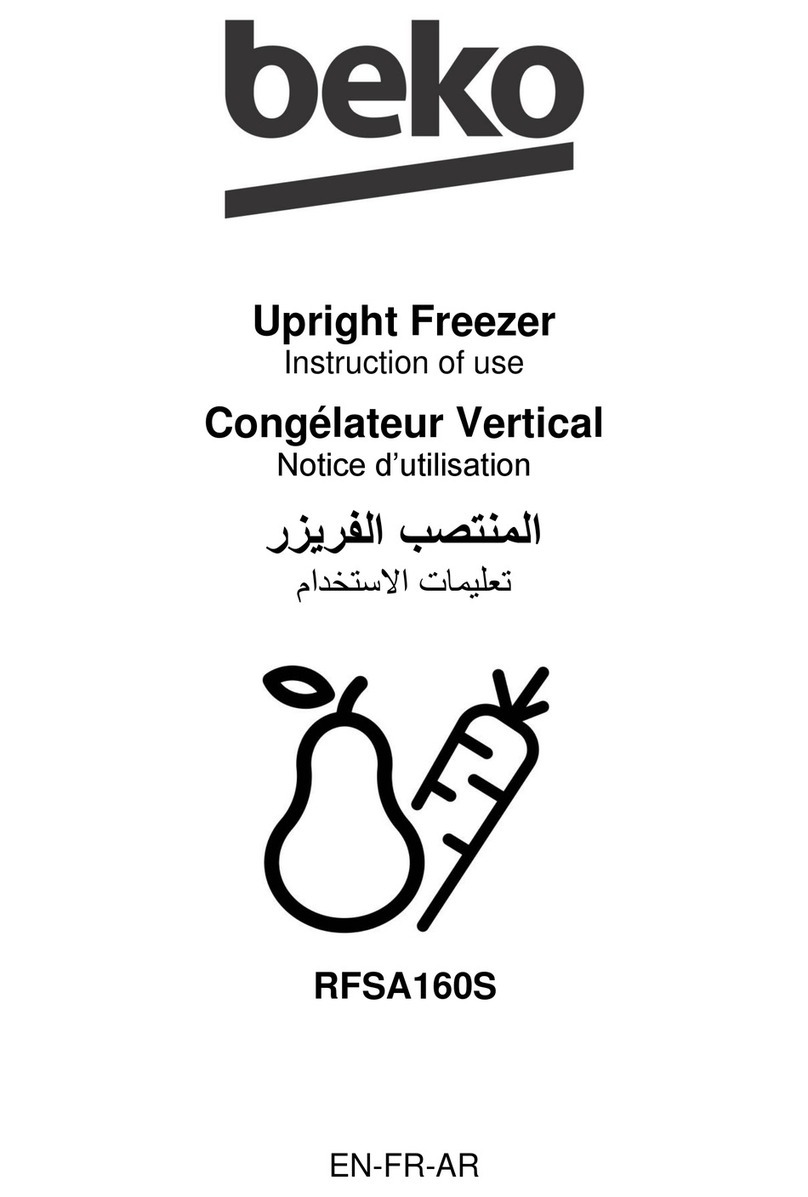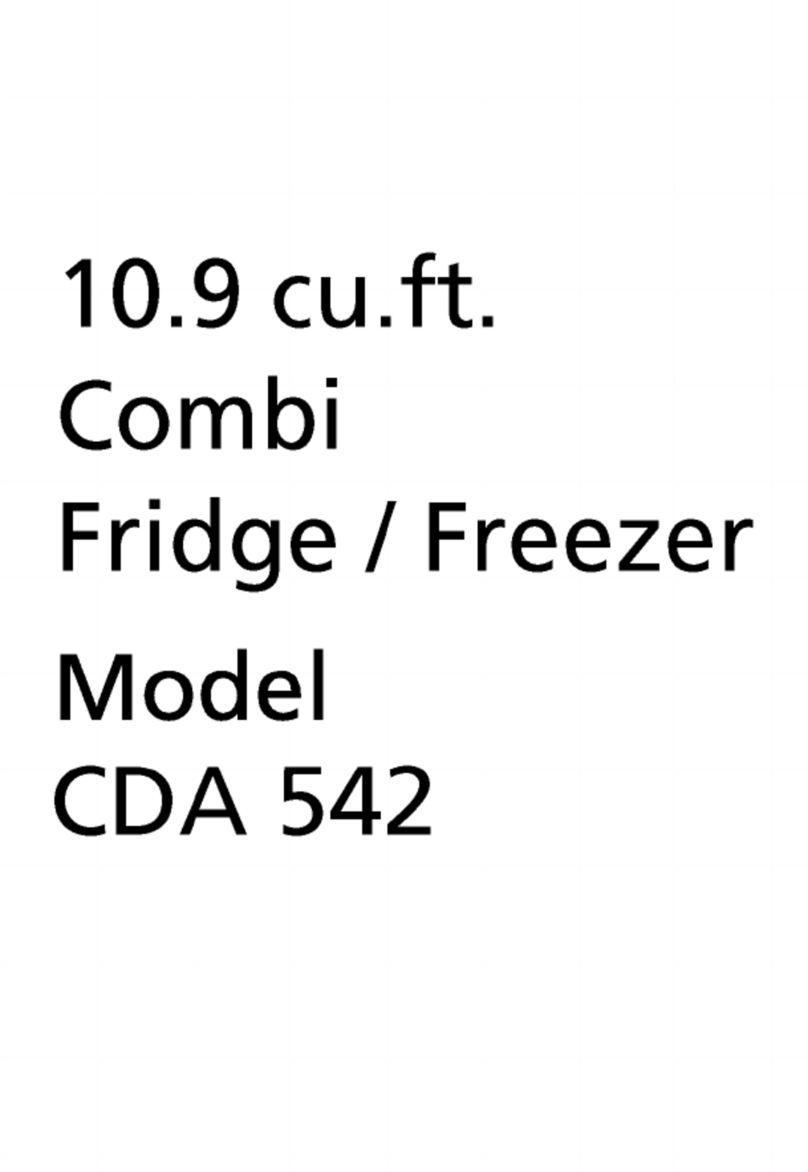WARNING!
In order to ensure a normal operation of your refrigerating appliance, which uses a completely environmentally
friendly refrigerant the R600a (flammable only under certain conditions) you must observe the following rules:
Do not hinder the free circulation of the air around the appliance.
Do not use mechanical devices in order to accelerate the defrosting, others than the ones recommended by the
manufacturer.
Do not destroy the refrigerating circuit.
Do not use electric appliances inside the food keeping compartment, other than those that might have been
recommended by the manufacturer.
AVVERTENZA!
Per garantire il funzionamento adeguato dell'elettrodomestico, che utilizza il refrigerante R600a completamente
adatto all'ambiente (infiammabile solo in determinate condizioni), è necessario attenersi alle seguenti regole:
Non ostacolare la libera circolazione dell'aria attorno all'elettrodomestico.
Per accelerare lo sbrinamento non utilizzare dispositivi meccanici diversi da quelli consigliati dal produttore.
Non danneggiare il circuito refrigerante.
Non utilizzare all'interno del comparto del cibo elettrodomestici diversi da quelli consigliati dal produttore.
UZMANĪBU!
Lai garantētu jūsu sasaldēšanas iekārtas (kura izmanto viedei nekaitīgu dzesēšanas vielu R600a – uzliesmojošs
tikai pie noteiktiem apstākĜiem), ir nepieciešams ievērot sekojošo:
Netrauciet gaisa cirkulācijai ap iekārtu.
Neizmantojiet nekādas mehāniskās iekārtas atkausēšanas paātrināšanai.
Nesabojājiet dzesēšanas ėēdi.
Nodalījumāpārtikas produktu glabāšanai neizmantojiet nekādas mehāniskās iekārtas, ja ražotājs to neiesaka.
DöMESIO!
Kad užtikrintum÷te normalųjūsųšaldiklioveikimą, kuris naudoja draugiškąaplinkai šaldymo agentąR600a
(užsidega tik tam tikromis sąlygomis) jūs privalote laikytis šiųnurodymų:
leiskite laisvai cirkuliuoti orui aplink prietaisą;
nenaudokite jokiųkitųpriemonių, nor÷dami atitirpinti šaldiklįar šaldiklį, naudokite tik tas, kurias rekomenduoja
gamintojas;
nekeiskite šaldiklio elektros grandin÷s;
nenaudokite elektros prietaisųšaldiklio viduje.
WAARSCHUWING!
U moet de volgende regels in acht nemen om de normale werking van uw koelkast, die het volledig
milieuvriendelijke koelmiddel R600a gebruikt, te verzekeren:
Hinder de vrije luchtcirculatie rond het toestel niet.
Gebruik geen andere mechanische toestellen om het ontdooien te versnellen dan de toestellen die door de
fabrikant worden aangeraden.
Vernietig het koelcircuit niet.
Gebruik geen andere elektrische toestellen in de bewaarlade voor etenswaren dan de toestellen die eventueel
door de fabrikant worden aangeraden.
OPOZORILO!
Za normalno delovanje vašega hladilnika, ki uporablja naravi prijazno hladilno sredstvo R 600a (vnetljivo samo
pod določenimi pogoji), je treba upoštevati naslednja pravila:
Ne ovirajte prostega pretoka zraka okoli naprave.
Za hitrejše odtajanje ne uporabljajte mehanskih naprav, ki jih ni priporočil proizvajalec.
Ne preprečite hladilnega krogotoka.
V prostoru za hrano ne uporabljajte električnih naprav, ki jih ni priporočil proizvajalec.
